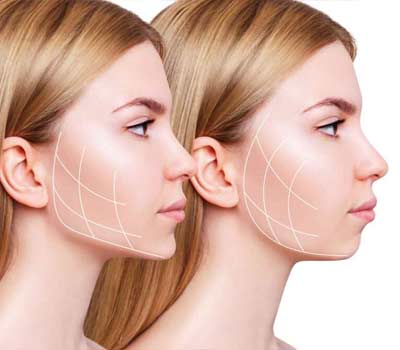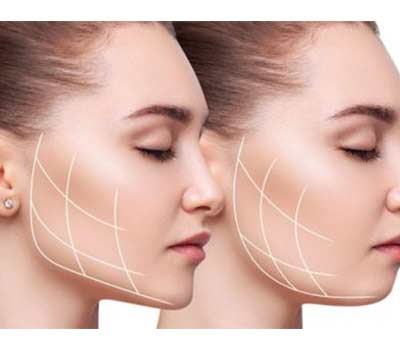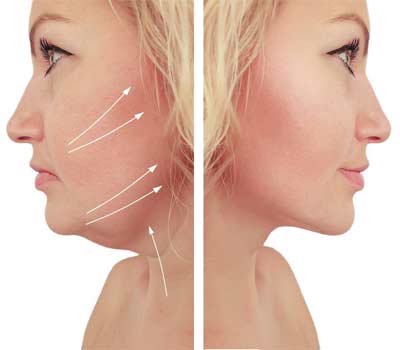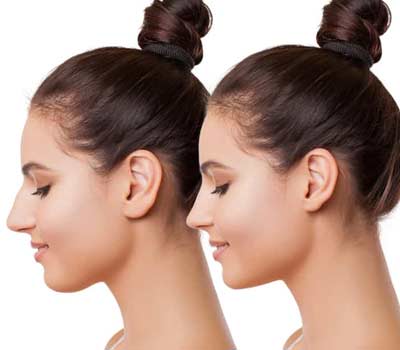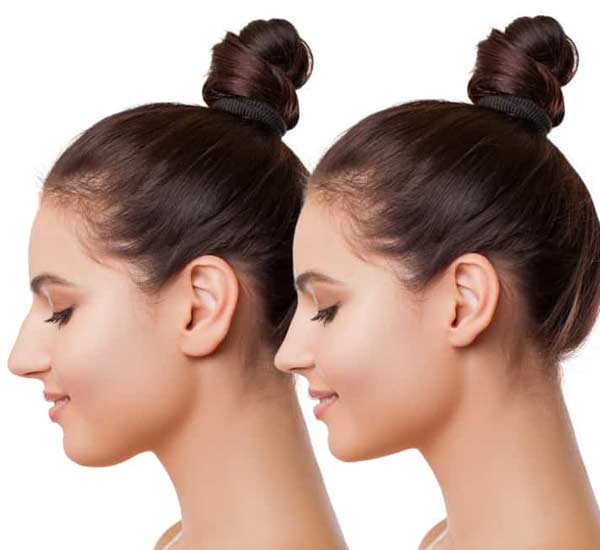
Cheek reduction (bichectomy) is a relatively simple procedure. Buccal fat pad is a structure composed of fat
Some people are uncomfortable with the size of their cheeks. The Buccal fat or buccal adipose body is a structure composed of fat, located on the face, in the region of the cheeks. When increased, this fat can change the shape of the face, making it more rounded, which can give the impression that the person is overweight or has a childish appearance. In some cases, this can affect self-esteem and confidence.
Surgery to remove excess Buccal fat is called bichectomy and promotes reduction of the cheeks. This surgery has become popular in Brazil recently, however, it was already known abroad since the 80’s. Famous people, like some Hollywood actors, are fans of this type of surgery and contributed to its spread.
Bichectomy is a relatively simple procedure, but the removal of fat requires care because it is a delicate area, between nerves and salivary channels. Through incisions measuring 1.0 to 2.0 cm, on the inside of each cheek, the fat is pulled and extracted. The amount of fat removed varies according to each case.
Only a plastic surgeon can indicate this type of procedure. Often the cause of a wider face can be due to hypertrophy of the masseter muscle (chewing muscle), treated with botulinum toxin application, or the accumulation of fat below the chin (double chin), treated with liposuction. In addition, if there is sagging of the skin, a facelift is the most suitable.
HOW IS A BICHECTOMY PERFORMED?
The procedure is simple and is usually performed by dentists or plastic surgeons. The method begins with local anesthesia and may be accompanied by sedation, and then a small cut is made in the oral cavity, facilitating manipulation and identification of the fat compartment. Bichat Balls are removed in a variable volume, according to the needs of each patient.
The surgery is quick and takes between 20 and 40 minutes, so there is no need for hospitalization. In this way, the patient is discharged on the same day as the procedure. In addition, the stitches used in the surgical procedure are absorbable, that is, they do not need to be removed.
The postoperative period is usually very quiet and is very similar to the extraction of wisdom teeth, which consists of swelling and small bruises in the first few days. The recovery is fast, it can vary between 5 and 7 days, and there is no need to leave work, as long as the swelling is not a bother.
Results appear after three weeks and recovery occurs approximately within six months after the procedure. The process is definitive, so there is no chance of the person having the same cheek again after extraction.
WHAT ARE THE BENEFITS OF BICHECTOMY?
IMPROVES SELF-ESTEEM
It is very common for patients to have low self-esteem and insecurity about their own image, either because of large cheeks, rounded face or because there is some asymmetry. When the person is dissatisfied with their appearance, bichectomy can be a solution for them to admire their own image again.
Surgery helps to change the natural characteristics of the face, making it possible to model the face so that it becomes more harmonious, young and delicate. In this way, the reflection in the mirror can become more pleasant, and, as a result, the person feels better, more confident and self-assured.
MAKES THE FACE MORE HARMONIOUS
People who have a round face may be uncomfortable with their features. Thus, they look for bichectomy, as the expected result is a discreet thinning of the face, especially in the cheeks region, highlighting the jaw line and the “cheekbones”. With this, the features of the face become more delicate and harmonic.
It is important to note that after the years, the face suffers a loss of fat. Therefore, people who undergo this surgery may need further fillings to regain a more youthful appearance.
BRINGS FAST RESULTS
One of the great benefits of the treatment is the quick results. In relation to other techniques and surgeries, it is a simple method that is also performed in dental offices.
This environment has a lot of structure for performing this surgery, as others are also performed, such as gingivoplasty, wisdom tooth extractions, gingivectomy, among others. Therefore, safety standards are followed and the materials used are sterilized or disposable, ensuring the protection of the patient’s health.
In a short time the fat is removed from the inner part of the cheeks and in three weeks the results appear.
IMPROVES CHEWING
All people have Bichat Balls, however in some people they develop in an exaggerated way, leaving the face very voluminous and round. As a result, chewing can be impaired, as it reduces intraoral space.
Bichectomy does not cause any problems for chewing, on the contrary, it brings functional improvement and ends involuntary bites on the inside of the cheeks, due to the little space in the mouth.
REDUCES SAGGING AND “DOUBLE CHIN”
Over time, our skin loses its elasticity and begins to accumulate fat even on the face, and this can result in saggy and sagging cheeks. This problem also happens in the neck region and the “double chin” appears.
With the removal of the Bichat Balls, sagging is controlled, the contours and cheekbones are defined again and the neck also gains more firmness. As a result, the appearance may become more youthful.
WHAT ARE THE RISKS OF BICHECTOMY?
There is a great myth that the procedure is dangerous and fraught with risks. In fact, surgery should not be trivialized because it is a plastic surgery like any other, thus having practically the same risks as any other surgical procedure. The risks are related to momentary or permanent paralysis of the face, bleeding and infections, and lesions of the parotid duct and the buccal branches of the facial nerve.
These events can decrease to practically zero when the surgical procedure is performed by a plastic surgeon or a specialized dentist, using a delicate surgical technique.
The buccal branches that could undergo some alteration are not the only branches of the facial nerve, and therefore, in the event of an unforeseen event, the mouth can undergo reinnervation of other branches, returning to normal.

